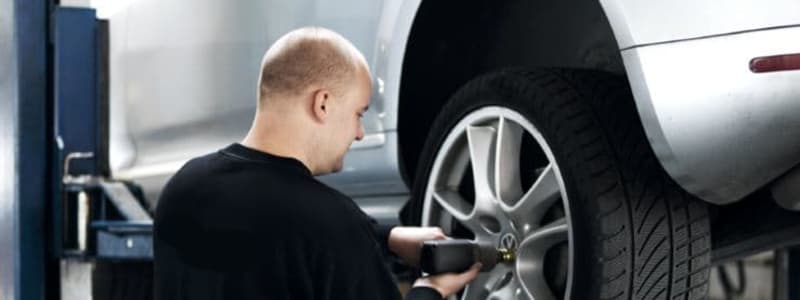
Whether it's winter or summer, anyone can benefit from useful tips for changing and maintaining tyres and wheels. Get our 9 tips here!
Tyres are not just rubber seals around your wheels, they are high-tech inventions designed to carry your car many miles. The tyre market is huge, and tyres can greatly affect your steering, safety and overall fuel economy.
Whenever you need to buy new tyres, change to a different type, like from winter to summer tyres, or just want to know how to maintain your tyres better, take a look at our 9-step guide:
Consider changing tyres for better safety and economy
If you live in an area where the roads are affected by seasonal changes, or if you’re going to an area very different from your own in terms of climate, you might want to change tyres. Summer tyres have poorer braking properties than winter tyres when the road surface gets colder, which can be a risk. In addition to security, there is also the economic aspect. Summer tyres provide poorer fuel economy than winter tyres when driving on cold roads!
Cleaning
If you change tyres yourself, it is important that you clean or wash the bolts, nuts and wheel hubs thoroughly, as this minimizes the risk of serious defects, rust and impact on the steering.
Check the tread patterns
Always check that the tread patterns complies with the legal requirement of at least 1.6 mm tread depth. A common tip to check this is to put in a 20p coin in the tyre's thread. If it obscures the outer rim, then you're good, because it's slightly less than 1.6 mm. But legal requirements are one thing, and security is something else. To get the best road grip, you should not drive with tyres that have a tread depth of less than 3 mm depending on, among other things, tyre width. This way, you make sure your tyres are as secure as they can be.
Examine the wear patterns
If you experience uneven wear on your tyres, it is recommended to buy new tyres; alternatively, you can make sure that the least worn tyres are mounted at the rear. Be aware that the car will most likely need a tracking/wheel alignment before the tyre change if you notice uneven wear.
Tighten the bolts
Whether you change the tyres yourself or have it done by a professional, you must always make sure that the bolts are retightened after a few miles of driving.
Check the tyre pressure
Once the tyres have been replaced, be sure to check their pressure if the garage has not done it for you. Incorrect tyre pressure results in unnecessary wear, bad steering and poor fuel economy.
Get tyre tracking
Regardless of whether you change tyres yourself, or have it done by a professional, you should get a wheel alignment at least every second or third year. This way you make sure that the wheels have the correct geometry and angle on the road.
Swap tyres
To avoid wearing the tyres out too quickly, it may be a good idea to swap the tyres. Basically, this can be done when the car goes through a service inspection. Talk to your mechanic about whether your tyres have the right properties for them to be swapped around.
Store your tyres correctly
If you need to replace your tyres, you need to make sure the current set of tyres are stored correctly when you dismount them. It’s not unimportant how you store the set you are not driving on. If the tyres are mounted on rims and filled with air, they must be hung up by the rims or stacked - preferably in tyre bags but preferably on a rack.
All about Tyres, Tyre change, Winter Tyres and Rims
- Tyres, tyre mounting and wheel change
- New Winter Tyres and Rims
- New Rims or Replacing Your Rims
- What Are 4x4 Tyres?
- What Are Run Flat Tyres?
- Which Are the Best Car Tyre Brands?
- Watch Out with Cheap Part Worn Tyres
- Cheap Tyres Online
- Flat Tyre? - How to Change a Flat Tyre
- Tyre Types and Sizes
- Can I Have Broader Tyres on My Car?
- What is TPMS Tire Pressure Monitoring System
- Eco Friendly Tyres?
- What is Wheel Alignment
- Service for wheel alignment
- What are the Rules for Winter Tyres in the UK?
- How to Tell if Winter Tyre is OK
- Are Your Winter Tyres in Good Shape?
- Save Thousands When You Need New Winter Tyres
- Change Tyre on a Wheel, or Two Sets of Tyres?







